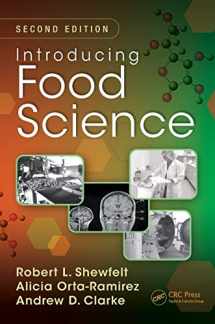
Introducing Food Science, Second Edition
Book details
Summary
Description
Written as an introductory food science textbook that excites students and fosters learning, the first edition of Introducing Food Science broke new ground. With an easy-to-read format and innovative sections such as Looking Back, Remember This!, and Looking Ahead, it quickly became popular with students and professors alike. This newly revised second edition keeps the features that made the first edition so well liked, while adding updated information as well as new tables, figures, exercises, and problems.
See What’s New in the Second Edition:
- New chapter Sustainability and Distribution
- Approximately 60 new tables and figures
- New section at the end of each chapter with problems / exercises to test comprehension
- Now includes a glossary
The book consists of four sections with each one building on the previous section to provide a logical structure and cohesiveness. It contains a series of problems at the end of each chapter to help students test their ability to comprehend the material and to provide instructors a reservoir for assignments, class discussions, and test questions. At least one problem at the end of each chapter involves a calculation so that students can strengthen their quantitative skills. The text introduces the basics of food science and then building on this foundation, explores it sub-disciplines. The well-rounded presentation conveys both commercial and scientific perspectives, providing a true flavor of food science and preparing students for future studies in this field.


We would LOVE it if you could help us and other readers by reviewing the book
Book review



